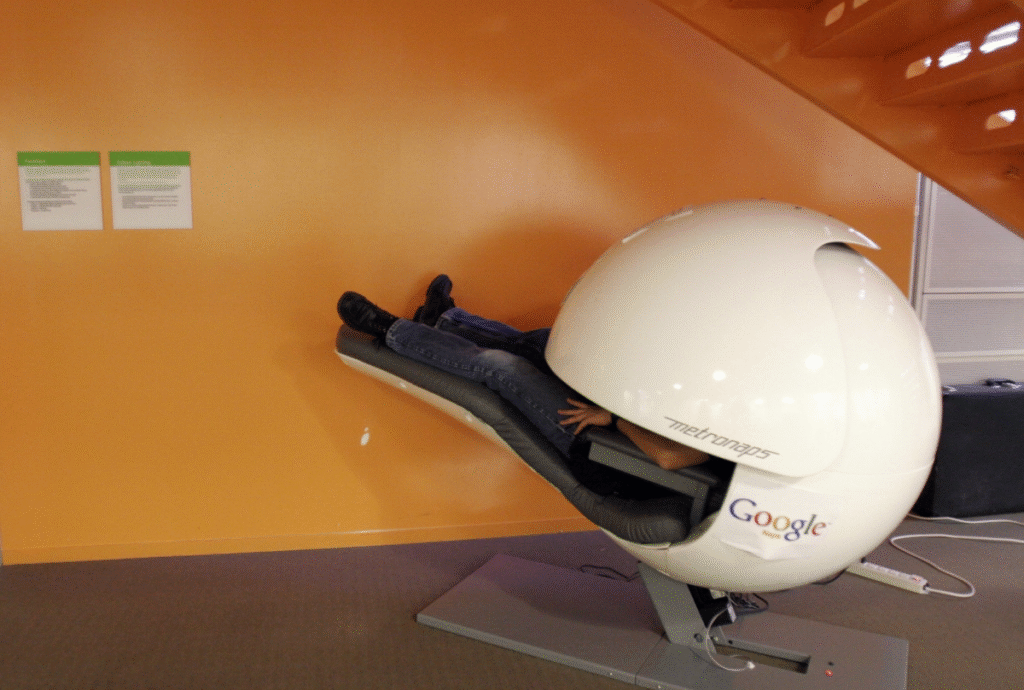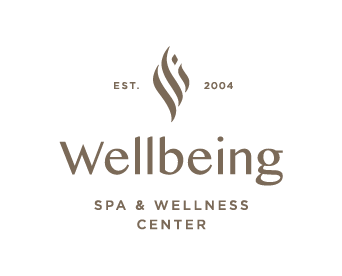
How Wellness Spas Reduce Workplace Stress and Improve Employee Productivity
Wellness spas workplace stress, In today’s fast-paced corporate world, workplace stress has become a silent epidemic. Long working hours, tight deadlines, constant connectivity, and growing performance expectations have left employees mentally and physically drained. The result? Burnout, absenteeism, reduced creativity, and lower productivity levels across industries.
As companies begin to recognize the true cost of employee exhaustion, a new form of corporate wellness has gained momentum — corporate spa wellness programs. These initiatives combine traditional relaxation therapies with modern wellness science to help employees recharge, recover, and perform at their best.
Wellness spas are no longer viewed as mere luxuries or weekend indulgences. They are now essential partners in fostering work stress recovery, promoting employee relaxation treatments, and sustaining high levels of motivation and engagement.
This article explores how wellness spas contribute to a healthier, more productive workforce, why businesses are investing in corporate spa packages, and how such programs can transform the overall work culture.
1. The Modern Workplace Stress Crisis

Work-related stress is one of the most pressing health issues of the 21st century. The World Health Organization has classified burnout as an occupational phenomenon — a direct result of unmanaged chronic workplace stress.
The Cost of Stress
According to global studies, stress-related issues cost organizations billions of dollars each year in lost productivity, absenteeism, and healthcare expenses. Employees suffering from stress are more likely to experience:
- Fatigue and insomnia
- Lower concentration and decision-making abilities
- Frequent illness and weakened immunity
- Emotional exhaustion and irritability
Beyond personal suffering, workplace stress reduces teamwork, stifles creativity, and increases staff turnover — all of which harm business performance.
As a result, more companies are now integrating corporate spa wellness programs into their employee care strategies to combat this silent drain on productivity.
2. Understanding Corporate Spa Wellness

Corporate spa wellness refers to structured wellness programs offered by professional spas that are tailored specifically for business organizations and their employees. These programs go beyond traditional massages — they are designed to address the specific physical and psychological strains of office life.
They may include:
- Employee relaxation treatments such as massages, aromatherapy, and hydrotherapy
- Work stress recovery sessions using mindfulness, yoga, and breathing techniques
- Customized corporate packages offering regular spa days or on-site treatments
- Workshops and wellness education on managing stress and improving lifestyle habits
What sets these programs apart is their focus on sustained well-being rather than short-term indulgence. The goal is to help employees restore balance, build resilience, and maintain long-term health.
3. How Wellness Spas Help in Work Stress Recovery

Wellness spas approach stress from a holistic perspective — addressing the mind, body, and emotions simultaneously.
a. Physical Recovery
Prolonged sitting, poor posture, and extended screen time cause muscle tension, neck and back pain, and headaches. Massage therapies and hydrotherapy sessions offered as part of employee relaxation treatments relieve these symptoms by:
- Improving blood circulation
- Reducing muscle stiffness
- Releasing endorphins that naturally elevate mood
Regular massage treatments have been shown to lower cortisol (the stress hormone) levels by up to 30%, leading to better sleep, improved concentration, and faster recovery from fatigue.
b. Mental and Emotional Balance
Stress often manifests as anxiety, irritability, and emotional exhaustion. Spa environments are designed to calm the nervous system through sensory elements — soft lighting, soothing sounds, aromatherapy scents, and tranquil settings.
Mindfulness-based therapies, meditation sessions, and breathing exercises offered in corporate spa wellness programs help employees:
- Regain focus and clarity
- Reduce anxiety and overthinking
- Cultivate emotional resilience
By slowing down the body’s stress response, these treatments help professionals detach from daily worries and return to work refreshed and centered.
c. Restoring Sleep Patterns
Chronic stress disrupts the body’s natural circadian rhythms, leading to insomnia and restlessness. Spa treatments like aromatherapy massages, hot stone therapy, and reflexology promote relaxation that extends beyond the session — improving sleep quality and duration.
Better sleep is directly linked to sharper thinking, improved memory, and enhanced productivity — all critical for workplace performance.
4. Corporate Spa Packages: Wellness as a Business Strategy

Forward-thinking organizations now recognize that investing in corporate spa wellness is not just an act of generosity — it’s a smart business strategy. Many spas now offer tailored corporate packages that can be customized to suit a company’s size, culture, and goals.
a. On-Site Mini Spa Sessions
Some companies partner with local spas to bring relaxation directly into the office. Short massages, aromatherapy breaks, or meditation sessions can be offered during lunch hours or after intense meetings.
These programs provide quick work stress recovery without requiring employees to travel — making wellness accessible and time-efficient.
b. Corporate Retreats
Luxury resorts and wellness spas often design multi-day corporate spa wellness retreats where teams can relax, recharge, and reconnect. These retreats usually combine:
- Yoga and meditation
- Team-building activities in nature
- Spa treatments and nutritional workshops
- Stress management and leadership coaching
Corporate retreats are particularly effective for preventing burnout among executives and helping teams strengthen trust and creativity.
c. Employee Wellness Memberships
Some organizations provide annual memberships for employee relaxation treatments at partnered wellness centers. Employees can use these services as needed — for example, after high-stress projects or during recovery periods.
This flexible approach promotes ongoing self-care and reduces the risk of chronic stress buildup.
d. Customized Wellness Days
Companies may organize quarterly “Wellness Days,” allowing employees to choose from a menu of spa and relaxation treatments. These events encourage self-care while reinforcing the company’s commitment to employee well-being.
5. The Connection Between Wellness and Productivity

Reducing stress is only one part of the story. The real impact of corporate spa wellness programs lies in how they transform workplace performance.
a. Enhanced Focus and Creativity
A relaxed mind is more innovative. When employees disconnect from pressure and reset their nervous systems, they return to work with renewed mental clarity. Spa-based work stress recovery programs encourage mindfulness — which improves concentration, problem-solving, and creative thinking.
b. Reduced Absenteeism and Turnover
When employees feel supported and cared for, they are less likely to experience burnout or seek employment elsewhere. Regular employee relaxation treatments help maintain physical and emotional well-being, reducing sick days and improving job satisfaction.
c. Higher Morale and Engagement
A company that invests in wellness sends a clear message: “You matter.” This sense of appreciation fosters loyalty and motivation. Teams who participate in spa wellness programs often report higher morale, better communication, and stronger teamwork.
d. Better Leadership Performance
Executives and managers often experience the highest stress levels. Corporate spa wellness retreats designed for leadership teams provide a space to reflect, recharge, and align goals — resulting in clearer strategic thinking and more empathetic management.
6. Burnout Prevention Through Wellness Programs
Burnout doesn’t happen overnight; it’s the result of prolonged stress without adequate recovery. Work stress recovery strategies must therefore focus on prevention, not just treatment.
Wellness spas play a vital role in this by:
- Encouraging early signs of rest and recovery
- Offering preventive therapies that restore balance
- Educating employees on managing stress and lifestyle habits
Workshops often accompany corporate spa wellness programs, teaching techniques such as mindfulness meditation, deep breathing, and ergonomic awareness to prevent tension build-up.
By making wellness a consistent part of the work culture, organizations can dramatically reduce burnout rates and create environments where employees can thrive long-term.
7. The Science Behind Spa-Based Stress Relief

The effectiveness of spa treatments in work stress recovery is supported by both psychology and physiology.
Hormonal Balance
Massage and hydrotherapy sessions reduce cortisol levels while increasing serotonin and dopamine — the body’s natural “feel-good” chemicals. This hormonal shift explains why people feel lighter, happier, and more energized after spa sessions.
Nervous System Reset
Slow, rhythmic pressure and heat therapies activate the parasympathetic nervous system, signaling the body to relax. This response counters the constant “fight-or-flight” state caused by workplace stress.
Enhanced Oxygen and Blood Flow
Improved circulation from massages delivers more oxygen to the brain and muscles, reducing fatigue and improving alertness — essential for maintaining productivity during demanding workdays.
8. Real-World Examples of Corporate Spa Wellness Success

Many global companies have already adopted corporate spa wellness initiatives with measurable success.
- Google and Microsoft include massage rooms and meditation pods in their campuses, reporting improved creativity and lower employee stress levels.
- Accenture offers mental health and spa-based recovery programs to executives to prevent burnout.
- Luxury hotels and resorts in Egypt, Dubai, and Thailand now provide exclusive corporate spa packages combining relaxation, fitness, and leadership development for teams on retreat.
These examples show that wellness investments not only improve health but also drive innovation, teamwork, and brand reputation.
9. Implementing a Corporate Spa Wellness Program

For companies interested in introducing corporate spa wellness, here’s how to start:
- Assess Employee Needs – Conduct surveys or discussions to understand what employees truly need — relaxation, physical recovery, or emotional support.
- Partner with Professional Wellness Spas – Choose spas experienced in corporate programs and capable of tailoring packages for your team.
- Set Clear Goals – Define whether your focus is burnout prevention, team bonding, or executive stress recovery.
- Integrate Wellness into the Calendar – Make wellness days or on-site sessions part of regular company scheduling.
- Encourage Participation – Normalize self-care by having managers lead by example and promoting open dialogue about mental health.
- Measure Impact – Track changes in absenteeism, satisfaction, and performance to evaluate the effectiveness of the program.
When done right, corporate wellness becomes an integral part of company culture rather than an occasional perk.
10. The Future of Work and Wellness
As hybrid and remote work become the norm, the boundaries between personal and professional life are blurring. Employees often work longer hours from home, increasing the risk of burnout.
This makes corporate spa wellness more relevant than ever. Companies can offer flexible wellness vouchers, virtual relaxation sessions, or partnerships with local spas accessible to remote staff.
In the future, corporate success will depend not just on productivity, but on how well organizations care for their people. A rested, happy, and healthy employee is the foundation of every successful enterprise.
11. The Psychological Benefits of Spa-Based Corporate Wellness

Beyond physical relaxation, employee relaxation treatments provide deep psychological rewards:
- Reduced anxiety: Calming environments and aromatherapy lower mental tension.
- Increased mindfulness: Employees learn to be present and manage overwhelming workloads.
- Emotional detox: A break from digital screens allows employees to reset emotionally.
- Self-esteem boost: Taking time for self-care reinforces self-worth, improving confidence at work.
This combination of mental clarity and emotional balance leads to better relationships, teamwork, and leadership across all levels of the company.
12. Integrating Spa Wellness with Broader Corporate Health Initiatives
Corporate spa wellness can seamlessly integrate with other wellness initiatives such as:
- Nutrition and healthy eating programs
- Fitness challenges or yoga classes
- Mental health counseling services
- Flexible working hours and mindfulness breaks
A comprehensive wellness strategy ensures that stress recovery becomes a continuous process — not a one-time event.
Conclusion: Rest, Recharge, and Rise Higher

In a world where burnout has become the new normal, corporate spa wellness offers a sustainable solution — one rooted in balance, care, and human connection.
By investing in employee relaxation treatments and work stress recovery programs, companies not only improve productivity but also create workplaces where people feel valued, motivated, and inspired.
When employees are relaxed, creativity flows. When they feel cared for, loyalty grows. And when wellness becomes part of the company culture, success naturally follows.
It’s time to shift the corporate mindset — from constant output to conscious recovery. Because the healthiest organizations are built on the well-being of their people.






Leave a Reply